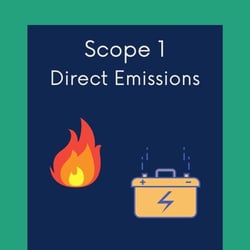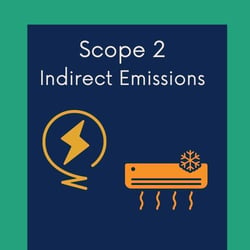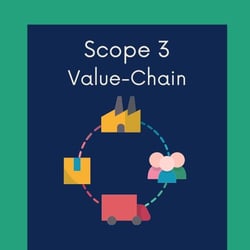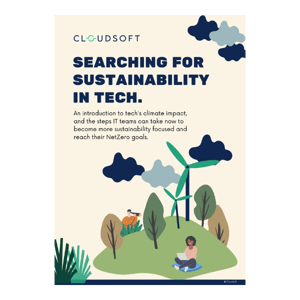Scope 1, 2 and 3 emissions - what's the difference?
/4.png?width=200&name=4.png)
To control and reduce your greenhouse emissions, you first need to understand where your hotspots are.
For technology organisations, and technology teams, electricity consumption will likely constitute the majority of your carbon footprint. Devices and hardware should not be ignored either - the raw materials required to produce them are resource-intensive and attention should be paid to how they are treated at the end of their useful life.
70% of your carbon footprint comes from Scope 3 emissions
- Deloitte
Understanding Scope 1, 2, and 3 emissions
Emissions are put into three buckets, depending on who 'owns' those emissions and the level of control you have over changing those emissions. This means some are easier to tackle, but also helps you to understand your carbon footprint throughout the entire chain of production and use of your products.
Scope 1 - Direct Emissions

Scope 1 emissions are direct emissions, for example by running boilers, back-up generators or company-owned vehicles.
Most companies will have good insight into their direct energy consumption, and can access the source data needed to convert direct purchases of gas and electricity into tonnes of CO2. There are carbon calculators available online to help you with this conversion.
With these insights, and because they are directly owned, Scope 1 emissions are easiest to control - but they make make up only a small part of your overall total.
Scope 2 - Indirect Emissions

Scope 2 emissions are indirect emissions, for example the energy produced on your behalf which is purchased for heating and cooling buildings or powering operations.
Like Scope 1, the source data needed to convert direct purchases of gas and electricity into tonnes of CO2 should be readily available from Finance or Procurement teams.
And like Scope 1, Scope 2 emissions are easier understand and therefore to control. Switching to renewable sources, for example, can quickly make a dent in CO2 emissions.
Scope 3 - Value Chain Emissions
 Scope 3 emissions are the emissions that your organisation is indirectly responsible for. This includes those generated by extracting the raw materials for your products, purchasing from suppliers or the emissions your product generates when your customers use or dispose of it.
Scope 3 emissions are the emissions that your organisation is indirectly responsible for. This includes those generated by extracting the raw materials for your products, purchasing from suppliers or the emissions your product generates when your customers use or dispose of it.
This makes accounting for them more difficult, despite them making up the biggest proportion of your climate impact. However, a good first step can be to use industry-averages to identify emissions hotspots and tackle those within easiest reach. An example of this could be data centre suppliers, or factories producing components for your product.
Want to learn more about tackling your emissions?
Together, all existing data centers use roughly 2% of the world’s electricity. And that's only going to grow as digital demands grow.
Technology teams have an opportunity, and a responsibility, to make sure that their operations are sustainable.
Download 'Searching for Sustainability in Tech', your guide to understanding:

- Scope 1, 2 and 3 emissions, and how to reduce them;
- why improving sustainability is a strategic imperative;
- the role of cloud computing in improving tech sustainability.